What is forest biotechnology?
Forest biotechnology is a collection of techniques that use living cells or their processes to solve problems related to forestry. Biotechnology in the forestry industry is still in the early stages of development. Only a few biotechnology-derived products and processes have been commercialized, mostly in the areas of pest management, forest regeneration and pulp and paper processing.
Why Biotech Trees?
Forests are under extreme pressures
• Global trade pressure
• Human population growth and demands
• Land converted out of forestry
• Climate change, biofuels, illegal logging, invasive threats...

When Used Responsibly Forest Biotechnology Might:
• Improve biofuels: increase the sustainability and efficiency of producing forest fuels
• Fight a changing climate: withstand weather extremes and sequester more carbon to reduce greenhouse gas concentrations
• Protect species: a mechanism to bring threatened and endangered species back to forest ecosystems
• Conserve land: growing more wood on less land, rehabilitating degraded soils
• Grow more wood: more than double wood production, improve wood quality
• Clean up after us: systematically absorb and store toxic substances from the environment for safe disposal.
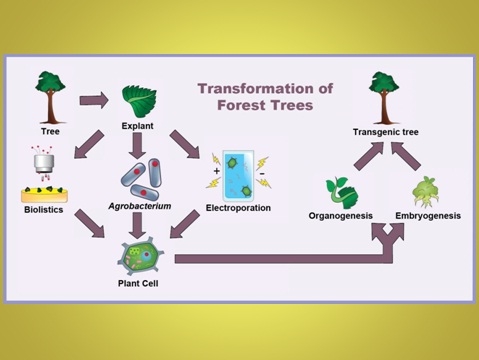
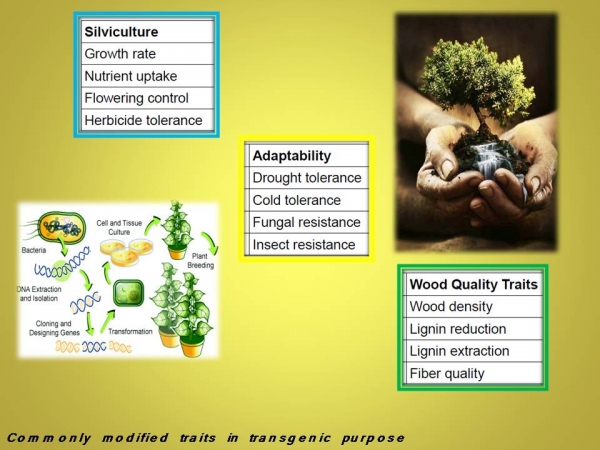
Modified Traits in Transgenic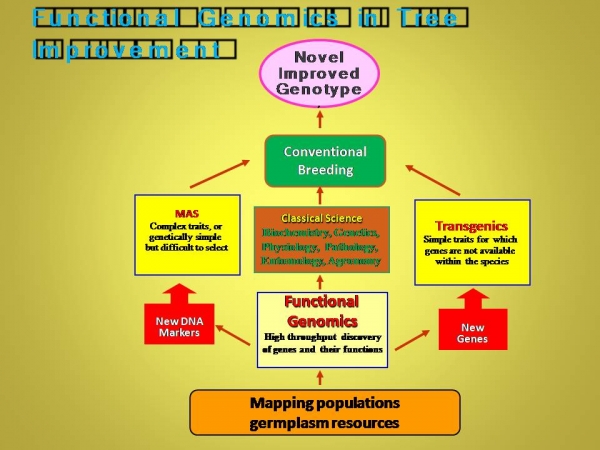
Functional Genomics in Tree Improvements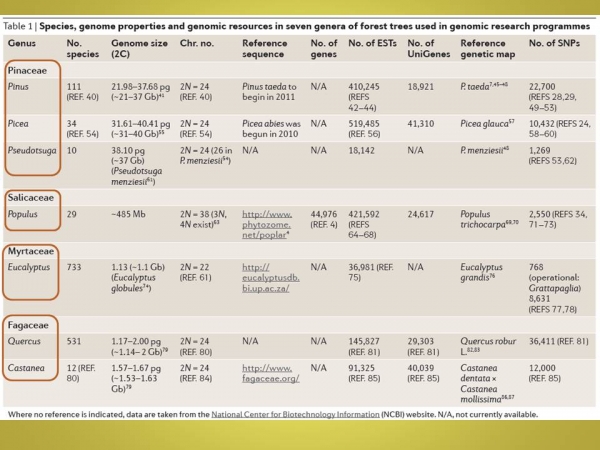
Species, Genomic Properties and Resources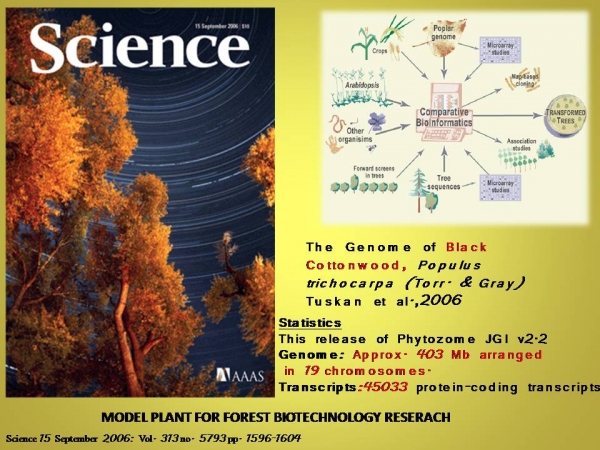
Model Plant for Biotechnology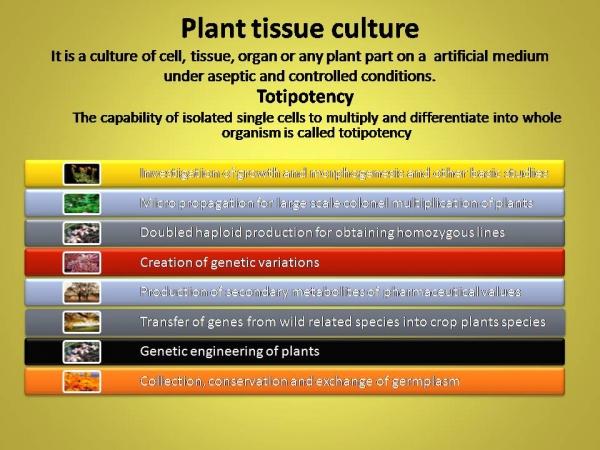
Plant Tissue CultureMicropropagation:
Micropropagation refers to in-vitro multiplication of plants starting from a small tissue explant. This explant may be leaf, root, nodal cutting or seedling.
Advantages
• Rapid multiplication
• Freedom from pests and pathogens
• Round the year multiplication as per demand
• Economy of space and resources
• Easy transport due to miniaturization
• Selective multiplication of desired plants.
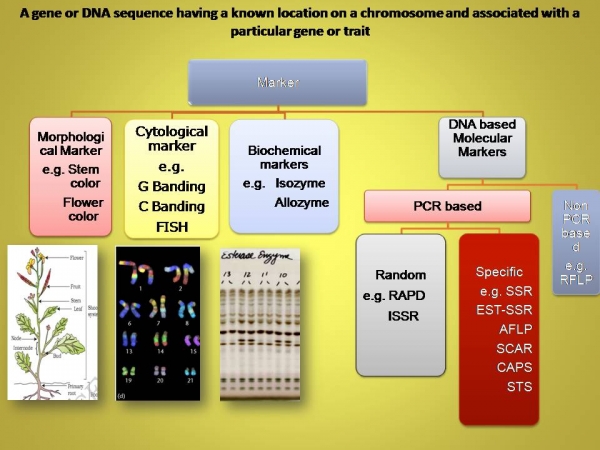
DNA Sequence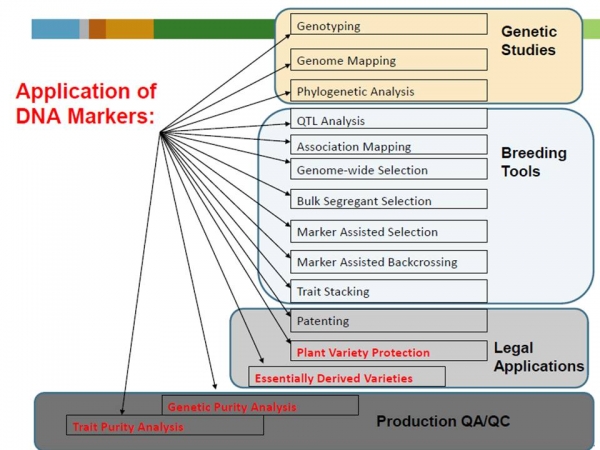
Application of DNA marker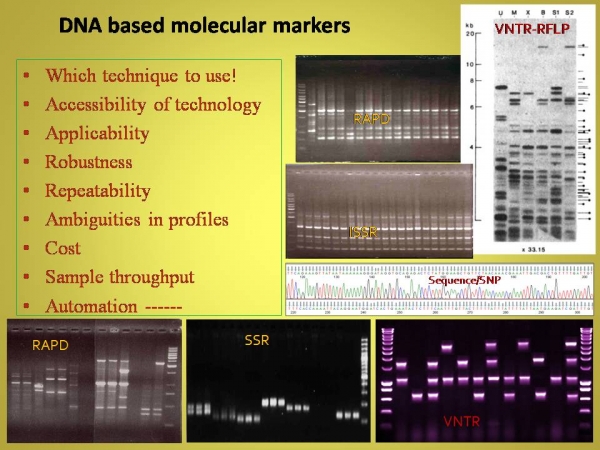
DNA based MarkersWhat are the characteristics of an ideal DNA marker?
An ideal molecular marker must have some desirable properties.
1) Highly polymorphic nature: It must be polymorphic as it is polymorphism that is measured for genetic diversity studies.
2) Co-dominant inheritance: determination of homozygous and
heterozygous states of diploid organisms.
3) Frequent occurrence in genome: A marker should be evenly and
frequently distributed throughout the genome.
4) Selective neutral behaviours: The DNA sequences of any organism are
neutral to environmental conditions or management practices.
5) Easy access (availability): It should be easily available in market.
6) Easy and fast assay
7) High reproducibility
8) Easy exchange of data between laboratories

